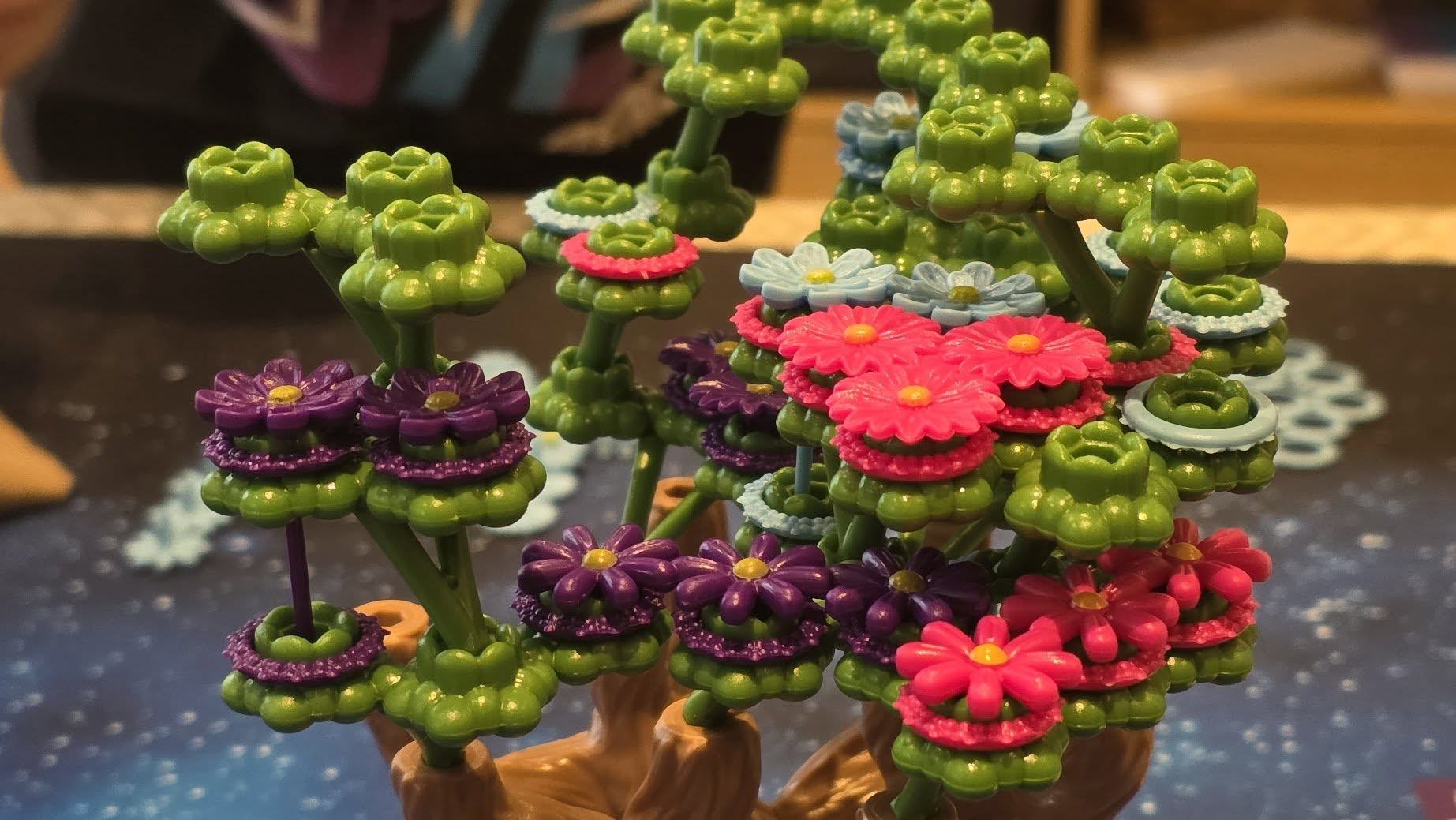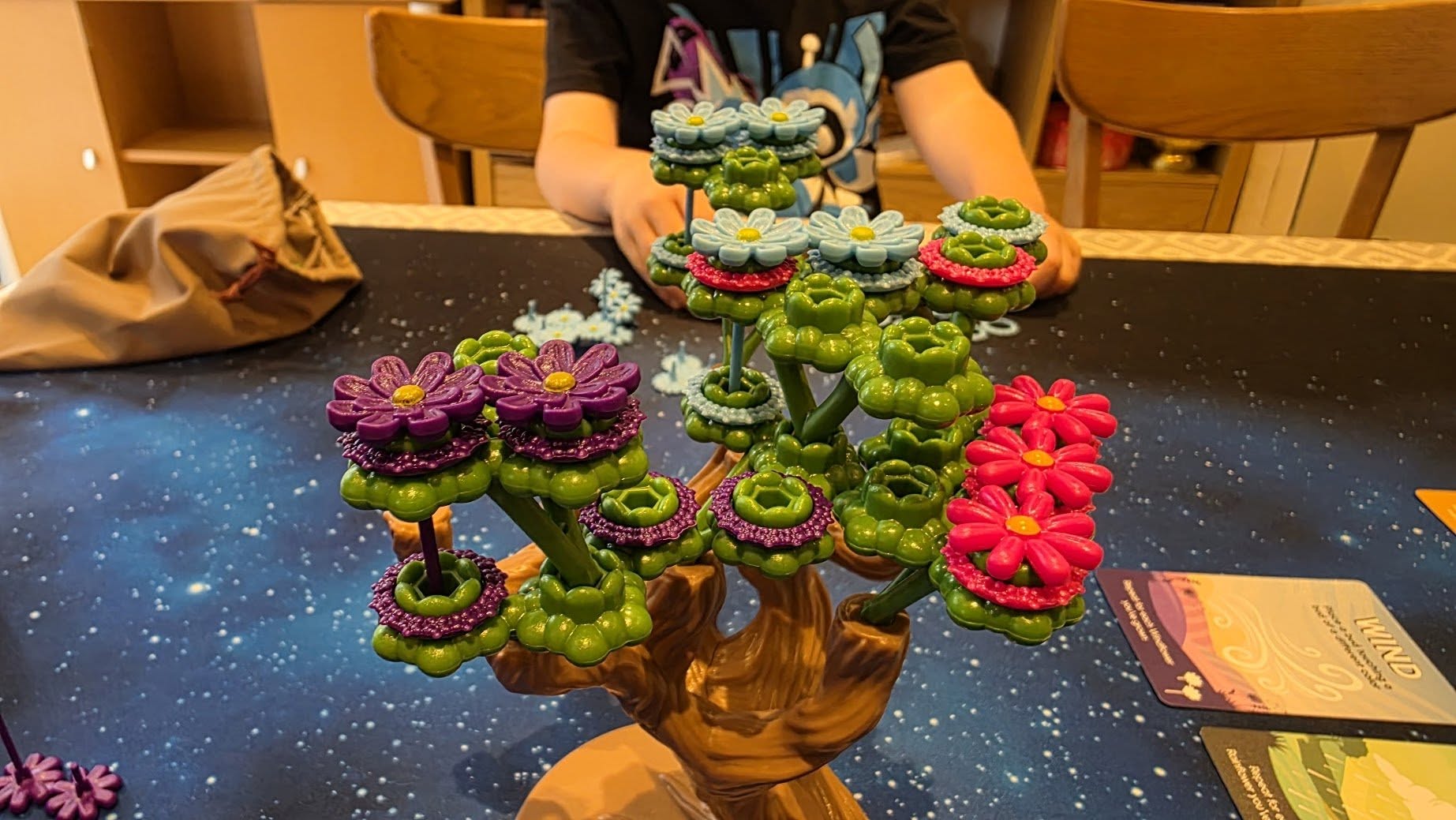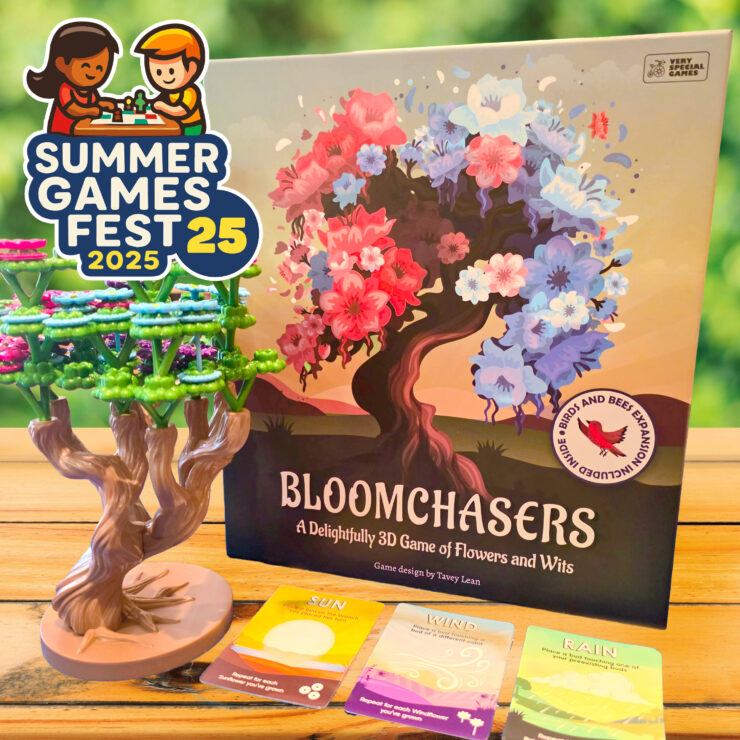We’ve had quite a few mainstream games in the last few days, as well as a few surprisingly big disappointments, so today we’re looking at something that is neither mainstream nor disappointing and that’s the absolutely beautiful and wonderful Bloomchasers.
Bloomchasers is actually a relatively simple game, which can best be described as a kind of tile-laying game, but done in 3D space by building branches and flowers out of a three-dimensional tree.
Each player starts with blooms of their colour, along with three different types of flowers. These are: flowers in a group of three, three flowers in a straight line, and a flower of two with one long stem that must go double height.
On your turn, you take a branch from the bag. These are all slightly different shapes and sizes, but the whole thing is put together in such a fantastic way that, no matter how you do it, all the branches link together to form hexagonal grids – whether it’s on the layer you’re on or even if you go up two or three layers. From a mathematical point of view, the way this works is really cool, and Jack and I were both absolutely mesmerised by how everything slotted together. Even when you’re on the third layer, you still have this really nice hexagonal grid that you can build your groups of buds on.

Anyway, I get distracted. So you take a branch, you lay a branch, and then you take a card from a display of three. These cards can do one of three things: they either let you place a bud on the branch you just laid, place a bud next to one of your existing buds, or place a bud next to someone else’s bud. As well as this, each of the cards – which are themed around sun, wind, and rain – also allow you to place a bonus bud depending on how many of that type of flower you’ve already got on the tree.
As new cards come out, eventually you’ll draw a balloon card. A balloon card allows you to place and turn some of your buds into flowers – if you’ve got buds in the correct configuration to do so. This can be, as I said, either three in a group, three in a line, or two buds vertically stacked.
The real tactics also come in with the blooming. As well as laying your own buds, you can bloom flowers if you have two out of the three required buds in place and steal the third from another player. This means positioning is really important, and things can get quite claustrophobic near the top of the tree. Placement of those branches becomes absolutely key.
There is also a cooperative mode so you can play together, which works well with little kids.

We’ve played this quite a few times now and it works brilliantly. It’s got amazing table presence, the components are really cool, and it’s actually a really simple game that you could quite comfortably play with younger children. There’s also a Birds and Bees expansion that adds extra shapes and ways to block, which we haven’t tried yet – but we enjoyed the base game so much, it just gives us a great excuse to review the expansion later in the summer.
Actually, the most surprising thing about Bloomchasers is the price. The base game is just over £30, and for what you get – and the quality of the components – that is staggeringly good.
We absolutely adored Bloomchasers. It’s beautiful to play, it looks really cool, it’s really simple to explain, and you could definitely play it with the grandparents over the summer. I cannot recommend it enough. This is definitely one of my absolute favourites and highlights of the summer so far.














